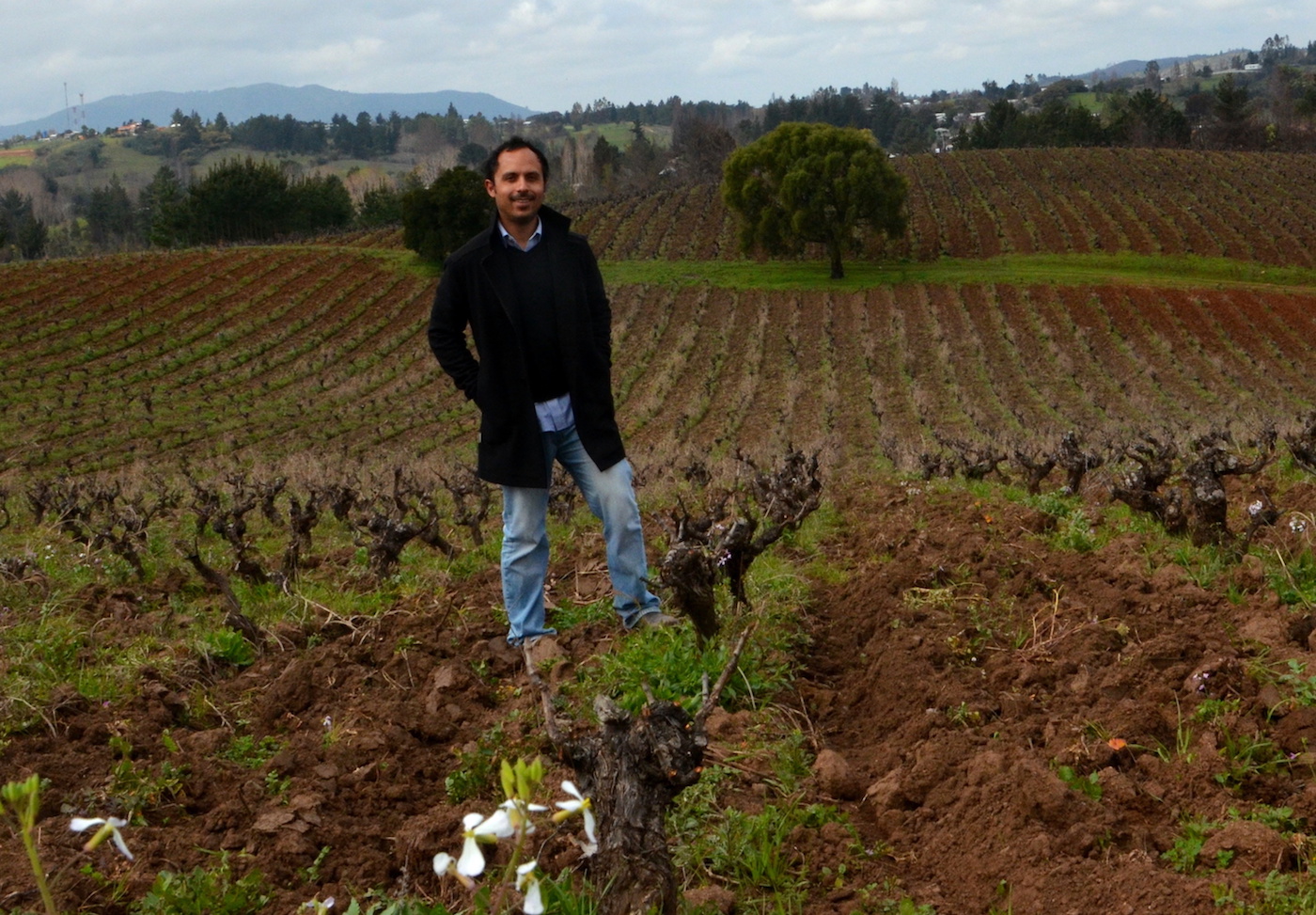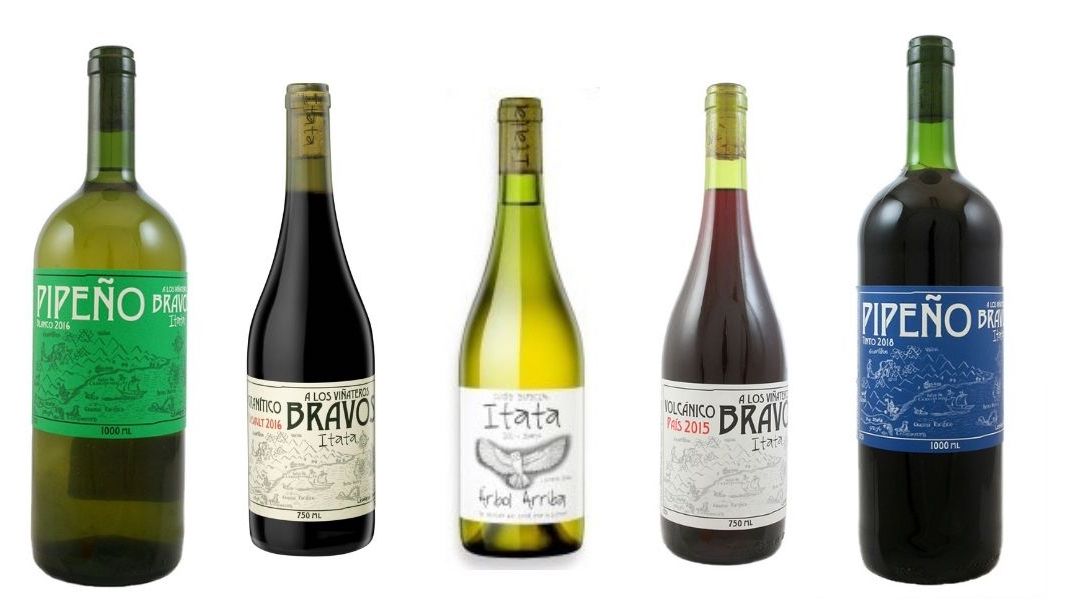Leo Erazo is one of the leading winemakers in southern Chile, making his excellent A los Viñateros Bravos and Rogue Vine wines from old vines in Itata. In this winemaker interview, journalist Amanda Barnes interviews Leo Erazo about the wealth of old vines in Itata, the heritage varieties of Chile and the different wine regions of Itata ranging from the river terraces inland to the granitic coastal hills.
Leo Erazo shares how he has been deepened his knowledge of the ‘cru’ sites in Itata and looking for the best plots around the coastal hills, or colinas, where the grapevines have good access to the poor, granitic soils. Amanda and Leo taste through five of the wines from the portfolio, and look at why Cinsault, País, Torontel and Muscat are star varieties from Itata.
Leo also talks about making natural wines and how his family winery is focusing on sustainability and recycling water, as well as the challenges of climate change that lay ahead in Itata and other wine regions in Chile and Argentina. An unmissable talk for natural wine lovers and terroir geeks!
Leo Erazo wine tasting notes
A los Viñateros Bravos, Pipeño Blanco 2020
This Pipeño Blanco could more accurately be described as Pipeño Naranja! It’s amber in colour and texture with a lively grip, fine tannins and good length, although in the nose it’s all about notes of flower blossom and orchard fruits. A really refreshing and slightly wild wine that will pair well with hearty countryside dishes.
- Old vine Moscatel and Corinto (Chasselas) field blend
- Vintage: 2020
- Sold in a 1 litre bottle
- 11.5%
- Winemaker: Leo Erazo
- Wine region: Itata
Available online at Les Caves de Pyrene
A los Viñateros Bravos, Pipeño Tinto 2020
I love this wine. I could glug the whole bottle with a friend over lunch! So fresh, so easy to drink and simple in the best kind of way. A bit of crunch and slightly stalky tannins keep it lively, with lots of fragrant aromas of fresh wild strawberries, bramble fruit and forest herbs.
- Old vine Pais and Cinsault
- Vintage: 2020
- Sold in a 1 litre bottle
- 13%
- Winemaker: Leo Erazo
- Wine region: Itata
Available online at Les Caves de Pyrene
A los Viñateros Bravos, Volcanico País 2019
This is País but not as you know it! Reflecting the volcanic terroir you can find in Itata’s hillsides, this wine has a distinctive flinty matchstrike note which gives it a mineral and savoury edge, with an undercurrent of forest fruit and wild underbrush. With a bright and crunchy finish, this is a great introductory wine to show the wild side of old-vine País.
- Old vine Pais
- Vintage: 2019
- 13.5%
- Winemaker: Leo Erazo
- Wine region: Itata
Available online at Les Caves de Pyrene
A los Viñateros Bravos, Granitico Cinsault 2019
I think Leo’s Cinsault wines are the real heart of his wine production – it’s where we see his mastery of these old vines sing. This Granitico Cinsault is the first in the line up of his cru wines, coming from specially selected microplots of very old Cinsault vines. This wine is filled with delicate floral notes, has a slatey minerality and is fragrant, fresh and juicy in the finish. It’s hard not to finish the glass in a couple of sips, but do try to savour it as it continues to unfurl. Beautiful.
- Old vine Cinsault
- Vintage: 2019
- 13%
- Winemaker: Leo Erazo
- Wine region: Itata
A los Viñateros Bravos Arbol Arriba Torontel 2019
I adore this wine. It really shows the great potential of old vine Torontel in Itata. A variety often overlooked and underrated, as Leo says, this wine proves how great terroir can make Torontel a great wine! And this is. Perfumed, floral and fragrant, it is so pretty on the nose, but has serious backbone in the palate with a long, linear finish with tension, vibrancy and freshness.
- Old vine Torontel field blend
- Vintage: 2019
- 12.5%
- Winemaker: Leo Erazo
- Wine region: Itata
Find out more about A los Viñateros Bravos and Rogue Vine.
What is Pipeño?
What is Pipeño wine? Pipeño is the most traditional and authentic Chilean wine which has been made for centuries in the southern regions of Itata, Maule and Bio Bio and continues to be made to this day. It was called Pipeño because it was made in raulí vats, known as pipas. Leo discusses the tradition of Pipeño in this interview, but you can also check out our Glossary on Chilean wine for a full description of the key Chilean wine terms.

